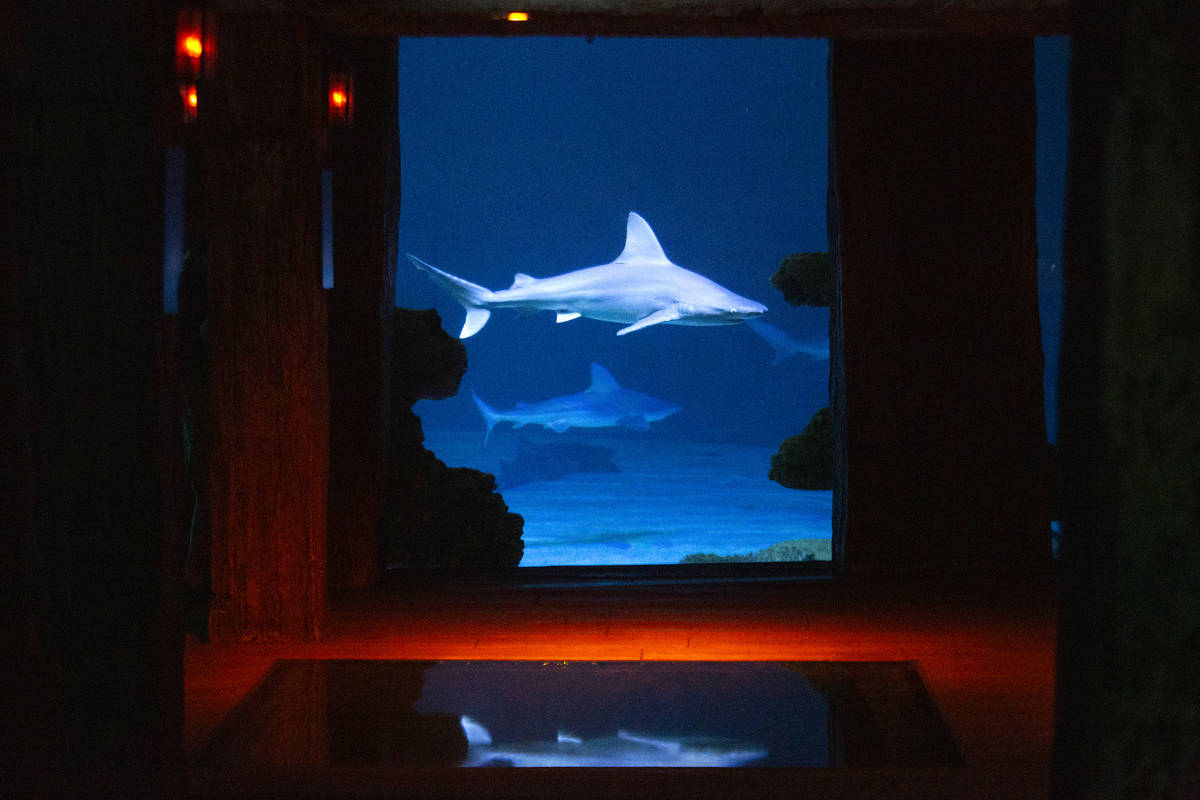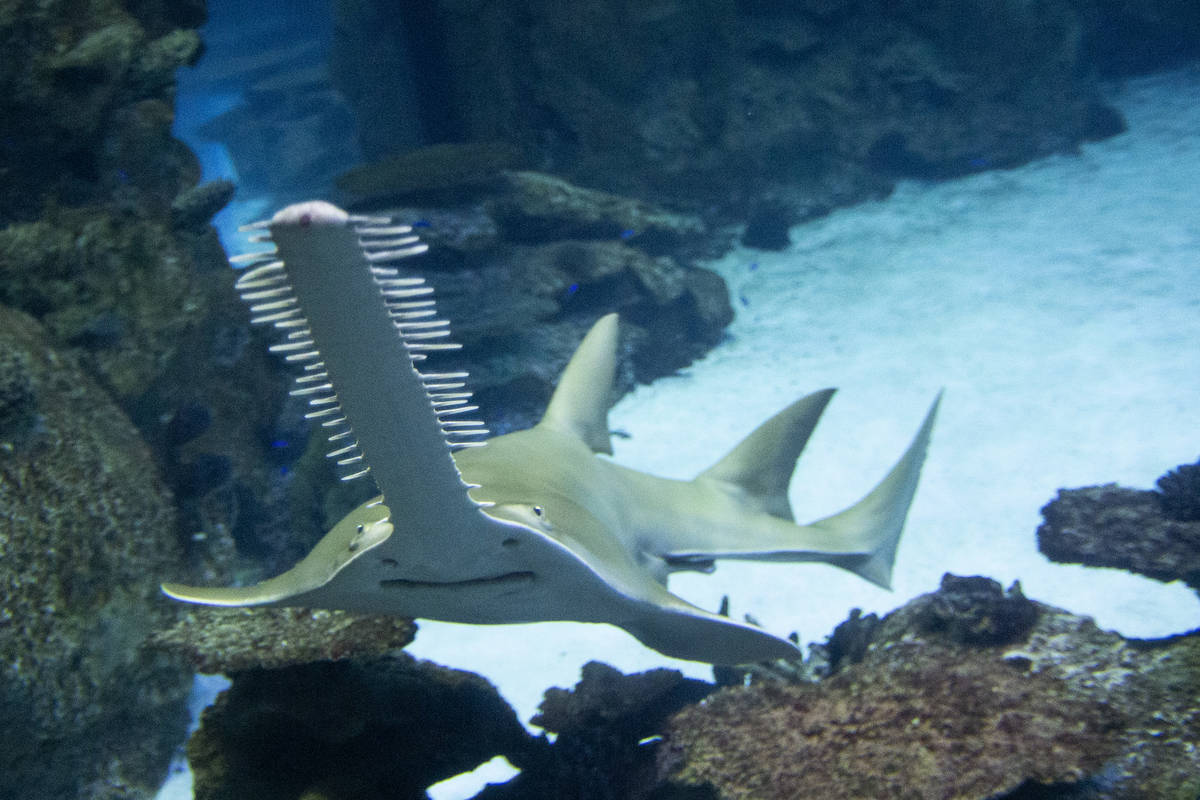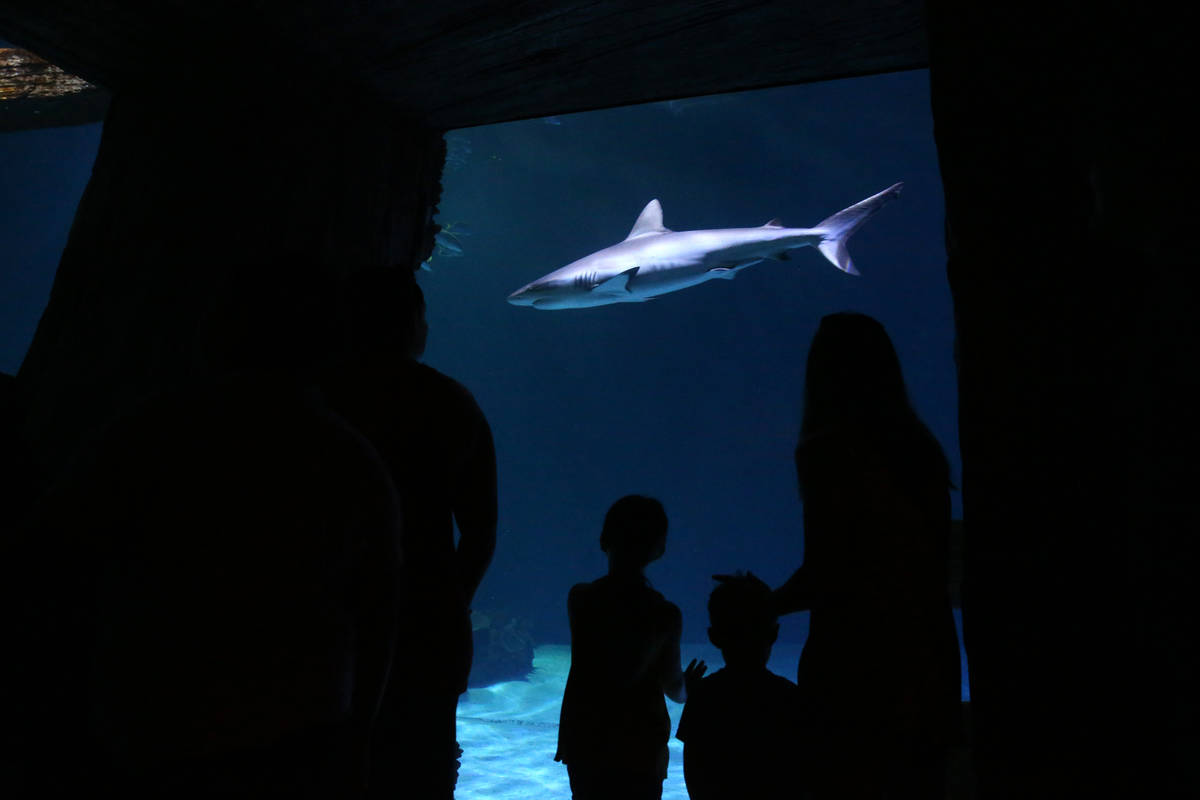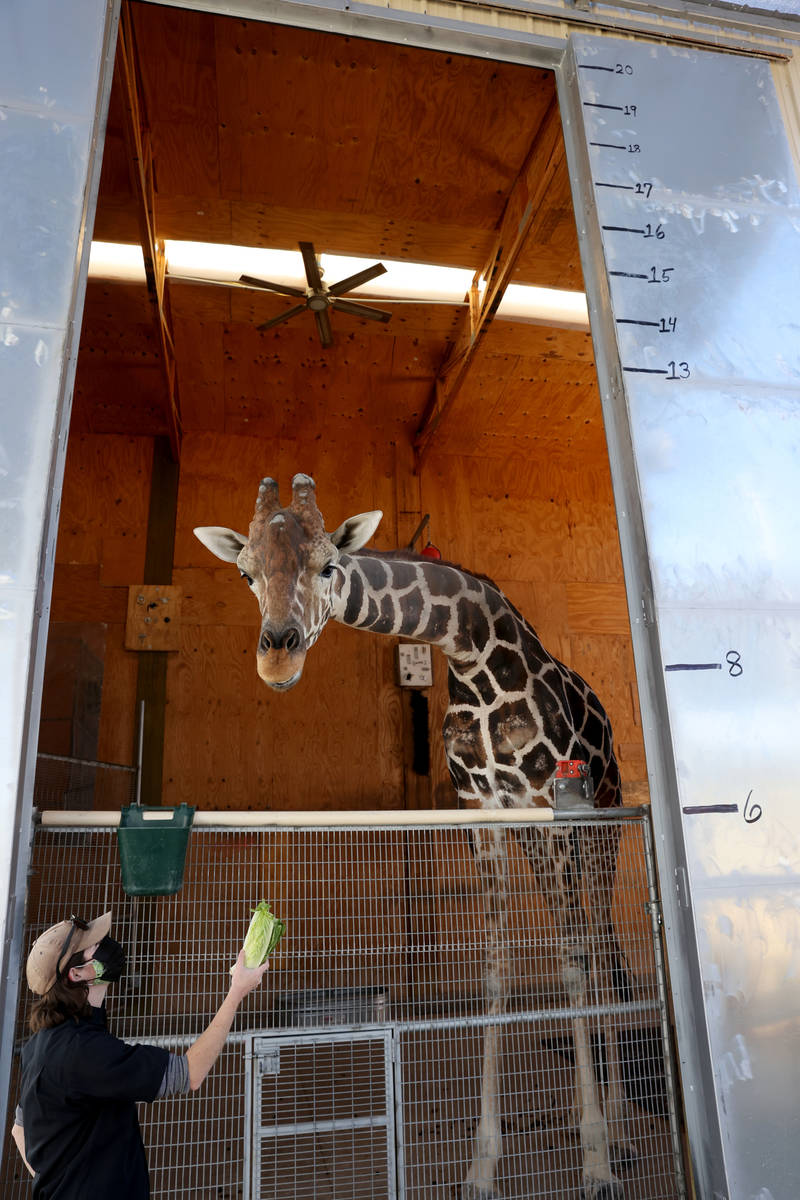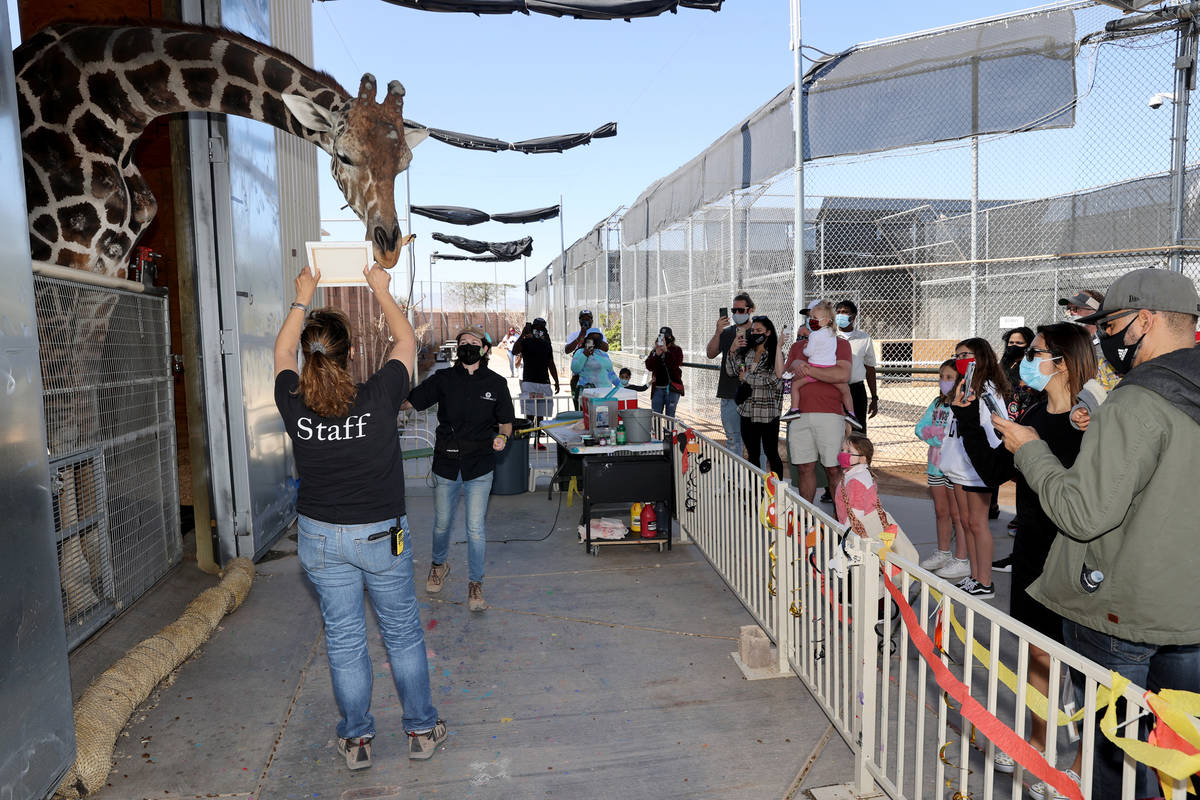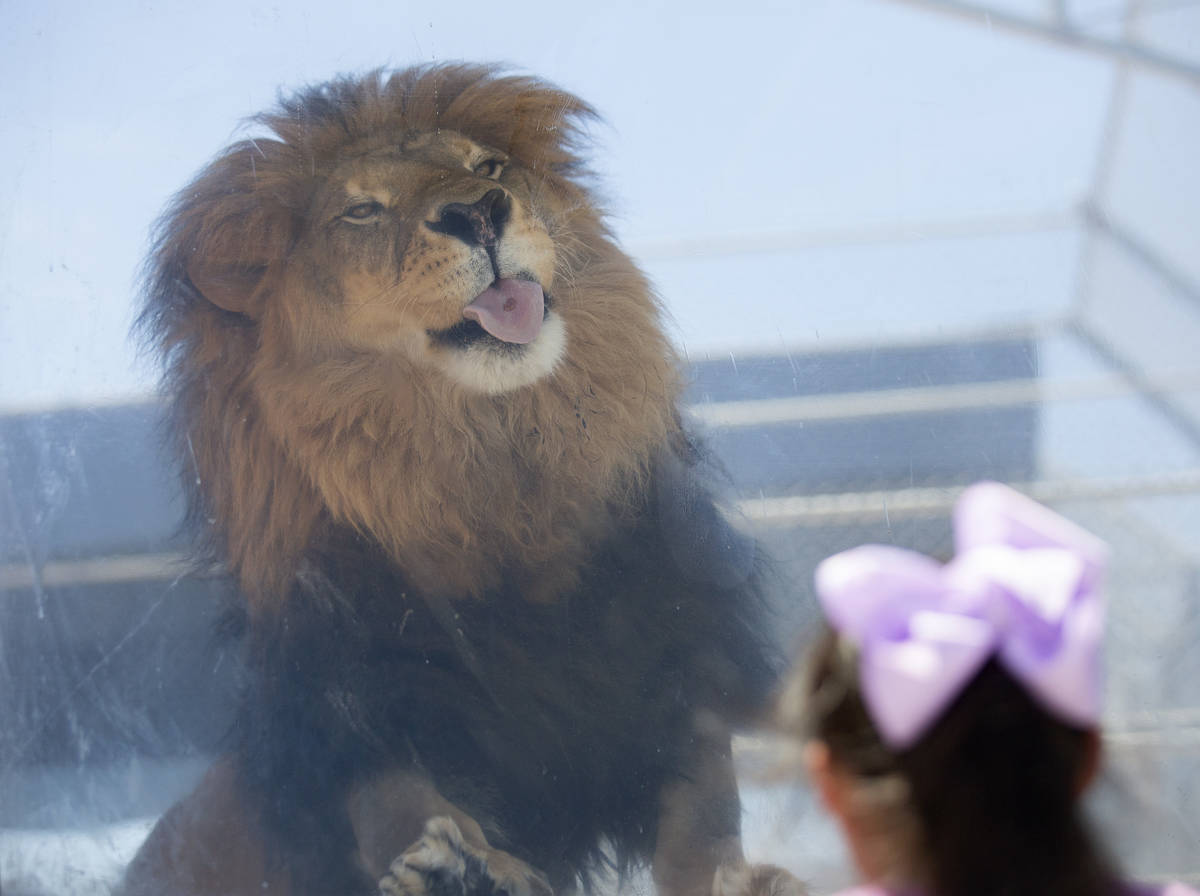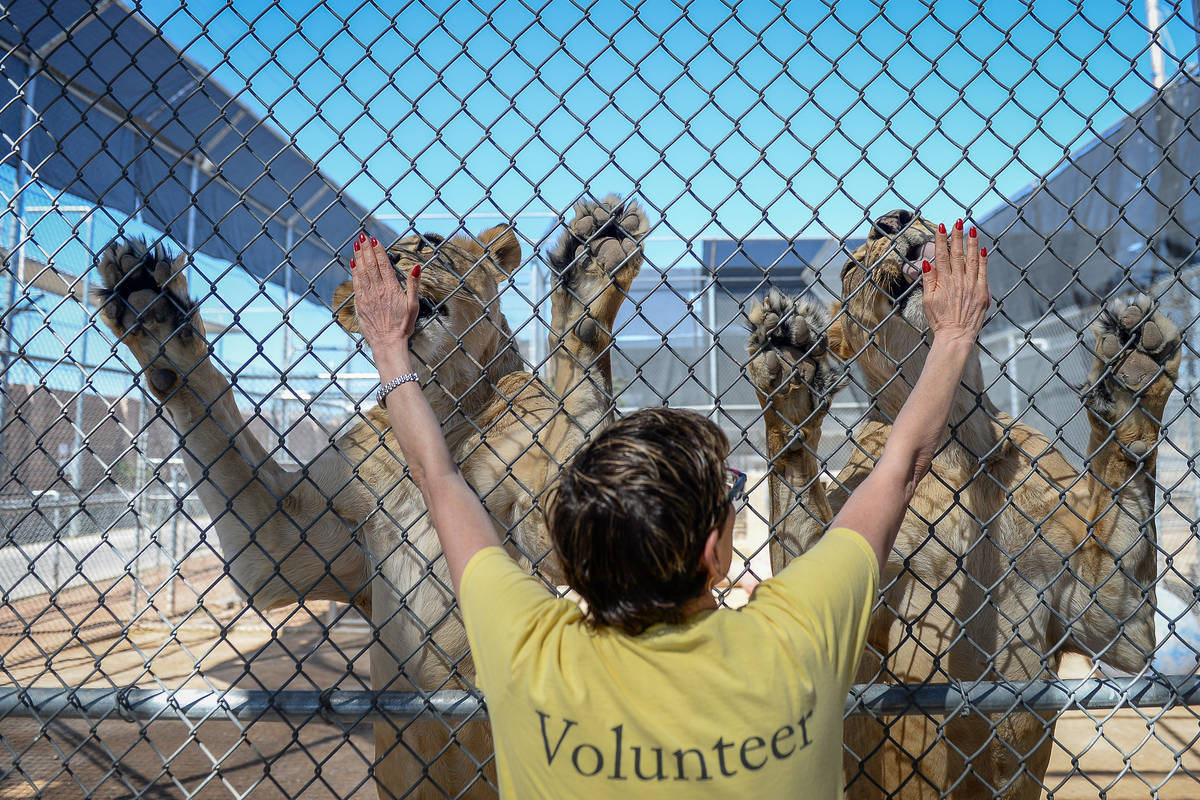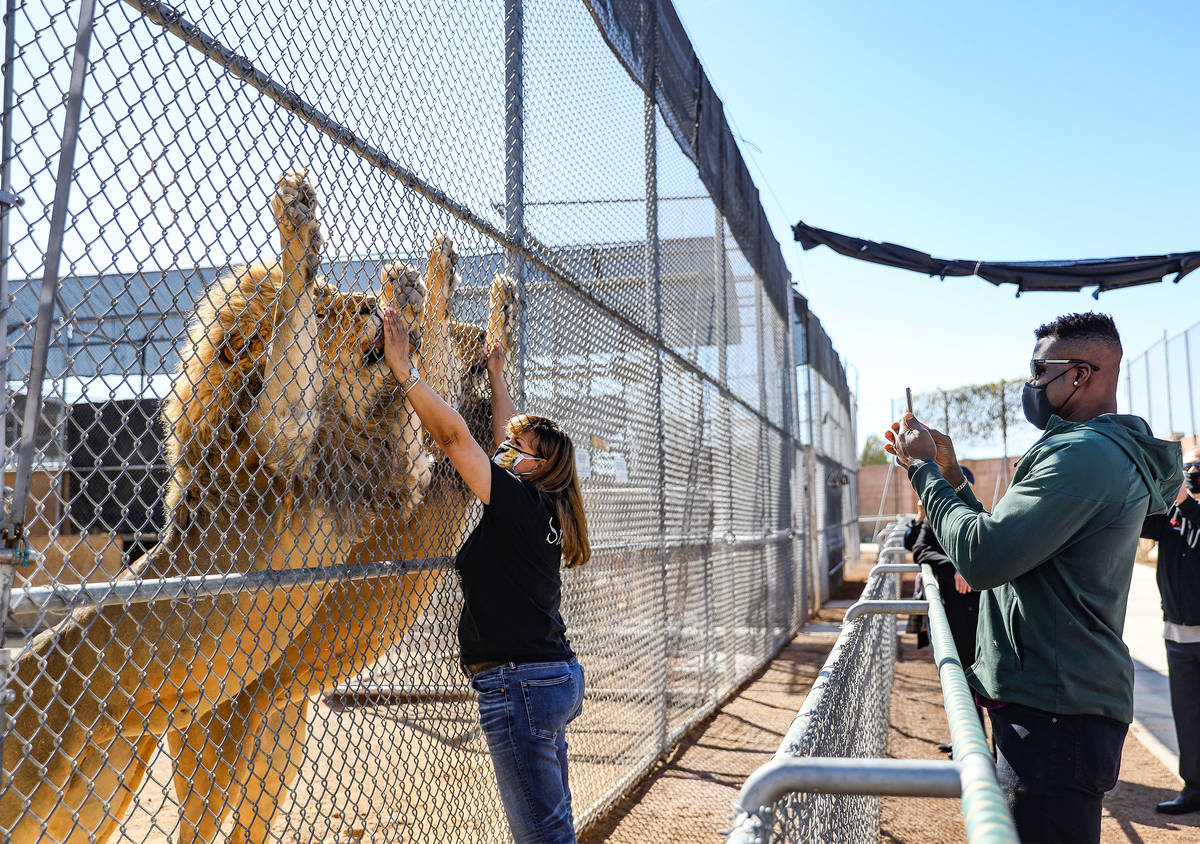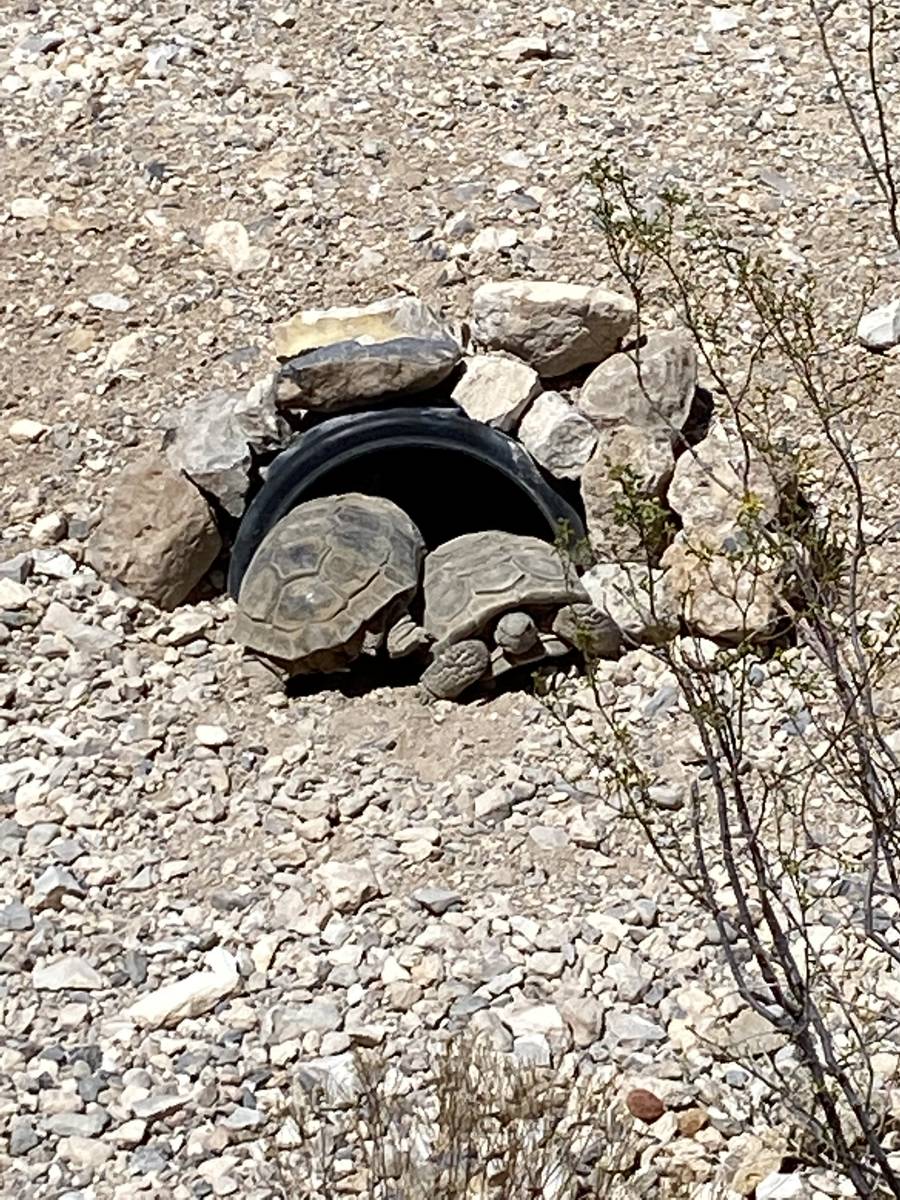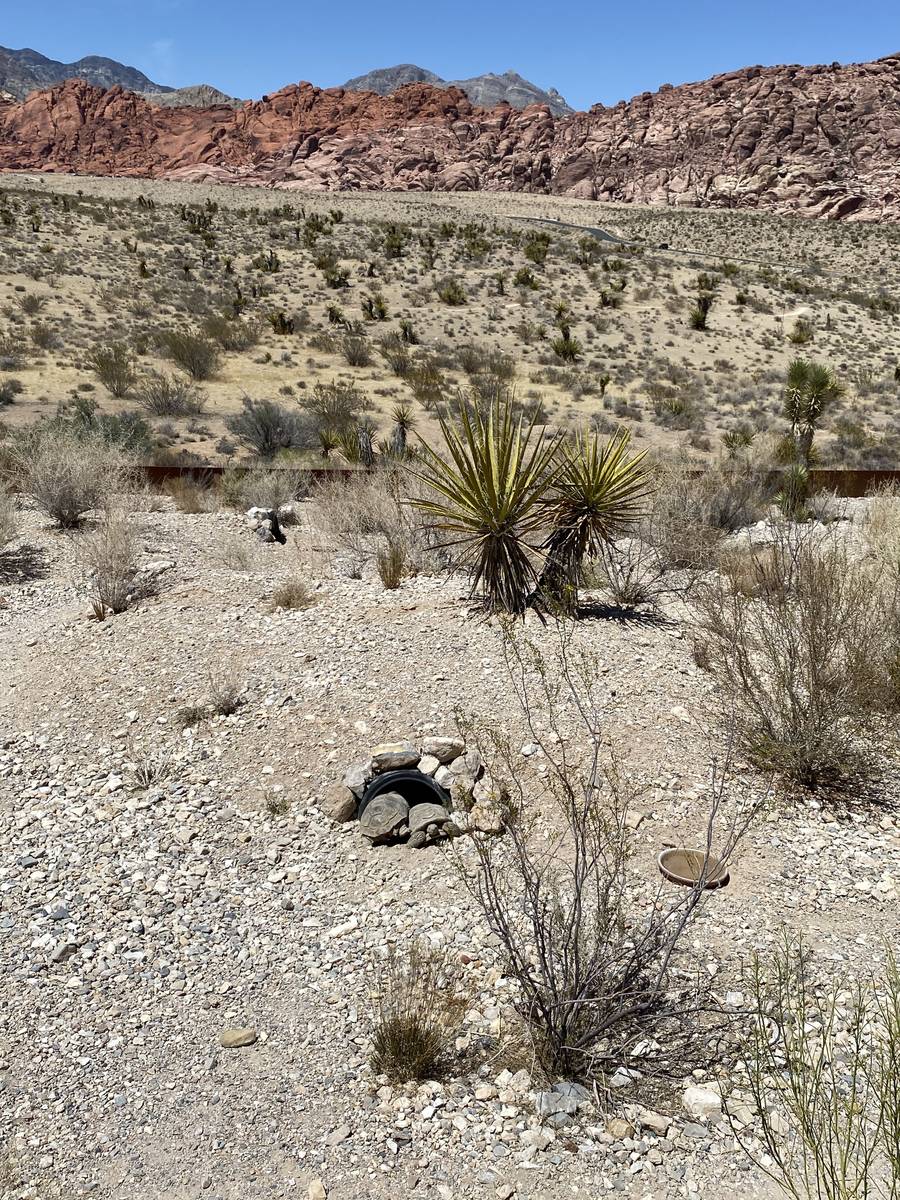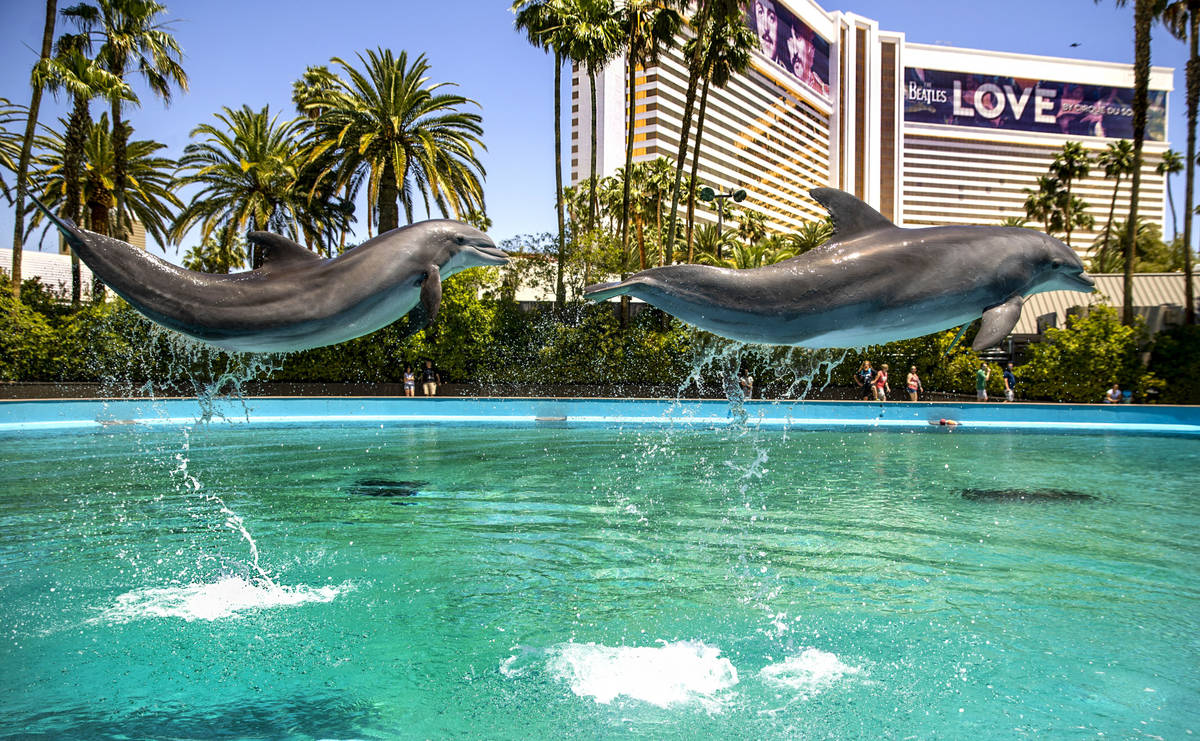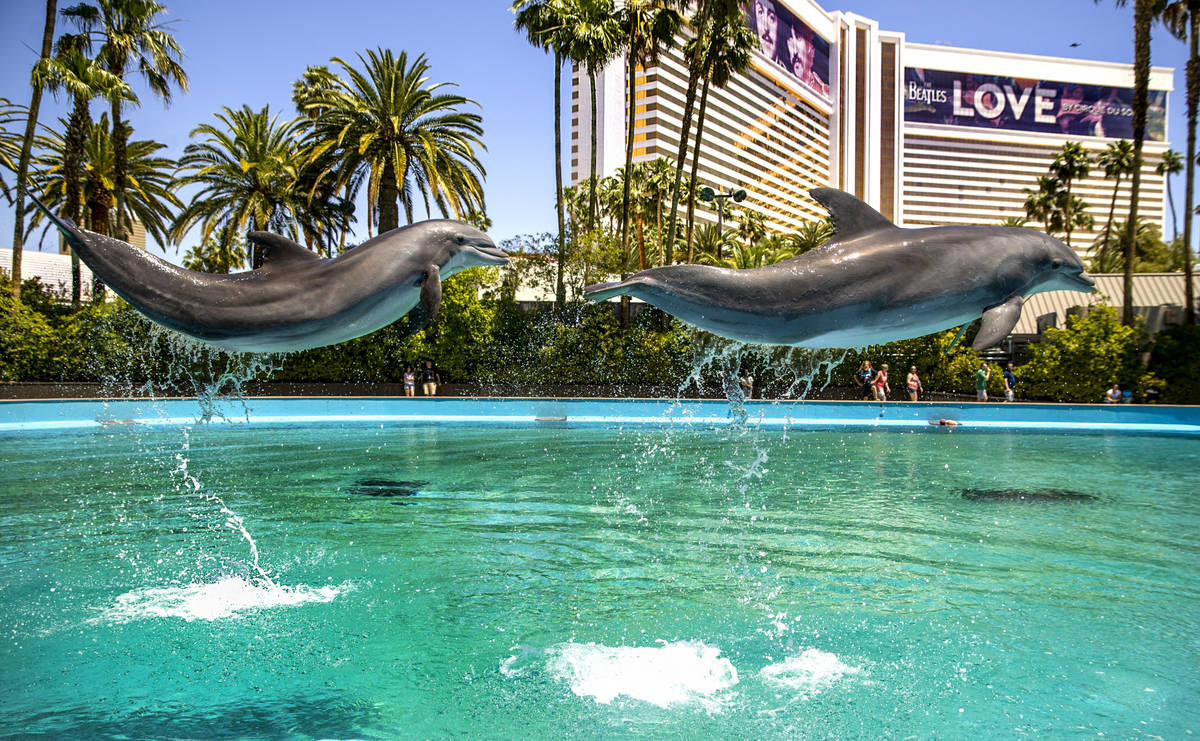Lions and tigers and dolphins and tortoises — wildlife on display in the valley
School’s almost out, mask mandates are being lifted and social distancing policies are being relaxed. So, after more than a year of at-home learning, we can only assume a lot of parents are looking for things to do with the kids outside the house. Although Las Vegas doesn’t have an official zoo, it does have several wildlife attractions on and off the Strip. Here are a few of our favorites.
Siegfried & Roy’s Secret Garden and Dolphin Habitat
The Mirage’s leopards, white lions, tigers and dolphins never went away. They waited out last year’s pandemic shutdown right here, looked after by their team of caretakers and trainers. And they’ve even been welcoming guests since August, in a limited capacity. But as COVID-19 restrictions are relaxed, more experiences are open to the public.
The most exciting of those may be the dolphin meet-and-greets. Three times a day, as trainers lead a handful of the habitat’s 10 bottlenose dolphins through daily exercises and activities, up to 12 people can take off their footwear and wade into the pool for a VIP experience — meeting, greeting and touching one of the aquatic mammals, even tossing him or her a fish or two.
Also expected to return this month is the underground/underwater exhibit known as Aqua. There, visitors learn about dolphins and ocean conservation and get to touch preserved oceanic creatures such as puffer fish, sea stars and coral. Through the windows, they can watch the dolphins at play, including Lady Ace, who was born at the habitat in 2019.
The Mirage, 702-791-7188, mirage.mgmresorts.com. $25 (adults), $19 (kids) for general admission tickets. Meet-and-greets start at $75.
The Lion Habitat Ranch
Located within sight of the Las Vegas Raiders’ Henderson headquarters, the Lion Habitat Ranch opened in 1989 as a home for the lions on display at the MGM Grand. In 2012, when the casino discontinued its big cat appearances, the ranch began welcoming visitors.
The star attractions are unquestionably the 30 lions, including a breed (Barbary lions) that is extinct in the wild. But Ozzie, a 7-year-old, 16-foot giraffe, has a following of his own — not simply for being the only giraffe in Nevada, but also for his hourly painting sessions. Guests can also view a pair of massive African sulcate tortoises, ostriches, a couple of emus and some talkative exotic birds.
The loosening of COVID restrictions has allowed the ranch to resume its private, behind-the-scenes tours, which allow select guests to tour the facility before it opens to the public, hand-feed the giraffe and watch trainers feed, water and bathe all of the animals. Other VIP experiences include a “Feast With the Beasts,” where diners enjoy a catered meal in a glass enclosure surrounded by lions.
10 a.m. to 2 p.m. Fridays through Mondays, general admission $25 (with discounts available for Nevada residents, senior, military, police and fire, college students and hotel employees), $150 (adults) and $75 (children) for behind-the-scenes tours. 382 Bruner Ave., 702-595-6666, lionhabitatranch.org
Tortoise Habitat
As the official state reptile of Nevada, the Mojave desert tortoise is beloved by many local residents. Sadly, sightings of the endangered species in the wild are rare. Your odds are much better at the Red Rock Canyon Visitor Center, which reopened May 1 and is home to nine rescued tortoises.
“You might see our tortoises in action now that they’re out of brumation,” says Erin J. McDermott, executive director of Friends of Red Rock Canyon, which feeds, bathes and cares for the tortoises.
The visitor center is open daily from 9 a.m. to 4:30 p.m., but McDermott says “earlier is better,” because the so-called “rock stars” tend to retreat to their burrows during prime daylight hours. And while there’s no way to predict when the tortoises will be active, she notes that they’re fed Wednesday and Saturday mornings.
In addition to the habitat, the visitor center has canyon views, a gift shop and educational panels and kiosks indoors and outside where you can learn more about the tortoises and their natural habitat. They include a little bit of history on each of the reptilian residents: Betty, Roxie, Hugo, Lucie, Willie, Libby, Mae, Shelby and Max. (Fun fact not mentioned in the exhibit: Red Rock’s Max briefly served as the official “Mojave Max” but has since retired from weather forecasting and passed the job and title on to a Springs Preserve tortoise.) The visitor center is also the start and finish of a 2-mile hiking trail known as the Moenkopi Loop.
Daily admission to the Scenic Loop (where the visitor center is located) is $15 per car, $10 per motorcycle and $5 per bicycle or pedestrian, from 8 a.m. to 5 p.m. Reservations, required through May 31, are $2 (in addition to admission) and available at recreation.gov.
Shark Reef Aquarium
Even guests who have visited Shark Reef at Mandalay Bay in the past will find something new on their first post-COVID return. Among the features added during the pandemic is an interactive virtual reality experience called Undersea Explorer. It starts as an educational exhibit that allows guests to track tagged sharks and sea turtles in real time, following their latest GPS pings while they wait to enter a 36-seat VR theater.
Once inside, you’ll take a seat in one of the motion chairs and strap on a VR headset to watch one of two 360-degree live-action films. The first puts you alongside divers searching for a mother humpback whale and her calf in Tonga, while the other immerses you with divers hand-feeding tiger sharks in the Bahamas.
In the aquarium, guests will find a new exhibit highlighting the work the team is doing to preserve the Devils Hole pupfish. Existing exclusively in the 93-degree waters of Devils Hole, within Nevada’s Ash Meadows National Wildlife Refuge, fewer than 100 of the inch-long iridescent blue fish are currently alive — up from an estimated 35 in 2013.
“We’re also preparing to reintroduce some things we had pre-COVID that had to be suspended,” says the aquarium’s director, Adrienne Rowland. Those include the opportunity for kids to feed the stingrays before the aquarium opens to the public and experiences that allow adults to feed sea turtles or sharks in private areas away from the crowds. Swims with the sharks for certified divers are also expected to return when distancing guidelines are lifted.
Mandalay Bay, 702-632-4555, mandalaybay.mgmresorts.com. $20 (adults), $18 (seniors), $15 (kids 5 through 12) for aquarium entry, plus $9 for Undersea Explorer VR experience.






